

Catch Fish with
Mike Ladle
Information Page
SEA FISHING
For anyone unfamiliar with the site always check the FRESHWATER, SALTWATER and TACK-TICS pages. The Saltwater page now extends back as a record of over several years of (mostly) sea fishing and may be a useful guide as to when to fish. The Freshwater stuff is also up to date now. I keep adding to both. These pages are effectively my diary and the latest will usually be about fishing in the previous day or two. As you see I also add the odd piece from my friends and correspondents if I've not been doing much. The Tactics pages which are chiefly 'how I do it' plus a bit of science are also updated regularly and (I think) worth a read (the earlier ones are mostly tackle and 'how to do it' stuff).
The good and the not so good!
Fishing is an unpredictable activity. Part of the interest, as far as I'm concerned, is that not everything goes to plan. My last two trips were classic examples.
As usual this season, I was keen to catch a decent bass using my large, freelined-baits and, although the weather seemed ideal - calming down after a bit of a blow and a fair bit of colour in the water - the state and timing of the tides were not quite as I prefer (my choice would be the first hour of a flooding spring tide at day break). Anyway, although it was not perfect, I thought that there was a chance (there's always a chance) so I chose a place that I had not tried for some time, prepared the gear, set the alarm clock and went to bed.
On the following morning I was on the shore and making my first cast at 03:55. High water was due at 06:30 and the sea temperature was 18.3degC. I was surprised to find a gusty, force 4 wind blowing straight onshore, not ideal for freelining close in but easy enough to fish. I progged a side of mackerel onto my large circle hook and gently flicked it out about five metres from where I stood on the shingle. Now for the wait. I stood with the rod in my right hand, the bale arm open and the line in a simple cat's-cradle round the fingers of my left (reel) hand. About half-an-hour passed with nothing happening and suddenly I thought I felt a slight tug on the braid. These modern low stretch lines are amazingly sensitive to any sort of activity at the hook end. A few seconds later there was a slight rattling similar to the bite of a pouting. Sometimes a bass will pick up the bait quite gently but somehow this didn't feel like one. However, I was tensed and ready for action so, when the line began to tighten, I released my grip and allowed it to slide out between finger and thumb. Two or three metres went and steadily it accelerated, but it was not pouring off the reel like a typical bass bite. I allowed several more metres to run out before gently closing the bale arm and waiting. It tightened and the rod tip bent round, there was definitely something on the end. I began to wind in and could feel the movement of a fish but it was clearly of no great size. I wound in and soon a small conger slid up the beach. Somehow it had managed to impale itself on the large hook but, fortunately, it was easy to extract the hook and pop the eel back. At least I'd caught something.
On went my other bait (I generally only take two) and I lobbed it out again. This time it was not much more than five minutes before there was a jerk and the line began to run out, faster than the previous bite. Could it be a bass? But no! I tightened and could feel the culprit, it was clearly bigger than the one I'd just returned but it was no bass and this time, as I slid it towards the shore, it came unstuck. Another conger of perhaps two or three pounds. The bait had gone and I'd been fishing for about an hour, so, it was time to go for breakfast and I did.
Not quite what I was hoping for - a tiny conger on a giant hook.
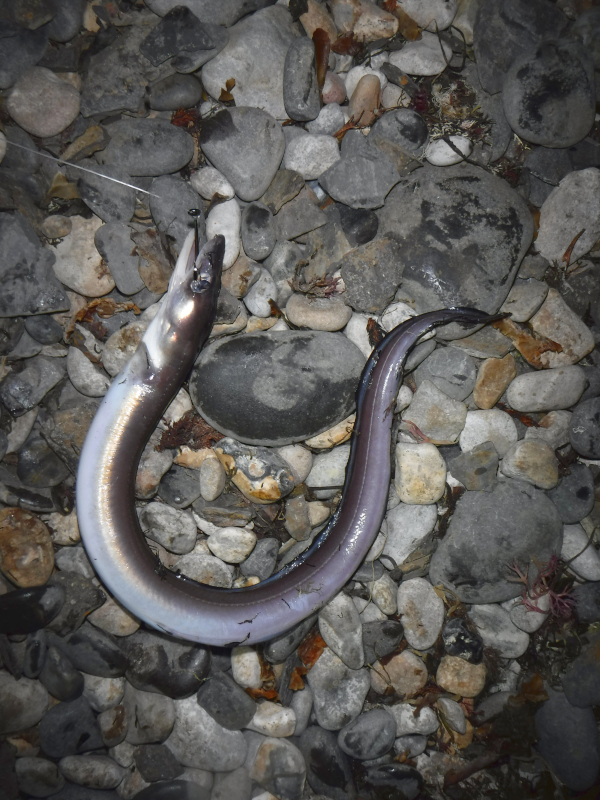
That afternoon my pal Nigel rang me and asked whether I thought there would be any chance of maggot-feeding mullet on that evening's high tide. It was not going to be rough and we did not think that there would be much in the way of weed 'middens' on the shore but, after a bit of humming and hawing, we decided to give it a go. The high tide would be a bit later than in the morning so we knew that the fish (if there were to be any), were unlikely to turn up much before six o'clock.
As arranged at 17:30hr, armed with our fly rods we were tramping along the shore on the 1000m walk to the spot where we hoped there might be some weed. When we reached a point about half-way to our objective we saw a few mullet skimming the surface, well beyond our fly casting range. Encouraging! We plodded on and noticed a small flock of black headed gulls on the shore at the appointed spot. Sure enough there was a 70m strip of weed dumped on the high tide line.
After a couple of casts with the spinning gear we saw mullet beginning to feed at the surface. Nigel and I set to and threw a few 'armfulls' of manky weed, laced with rather small Coelopa maggots, into the sea, to try and get the fish feeding. Soon they were there in force and we were in action with the fly rods. In the absence of a few shop bought maggots as bait (I had some but stupidly had left them at home) we both tried small Delta eels on the fly gear. These little paddle-tailed imitations are very effective attractors for all sorts of fish, except mullet, which are usually so preoccupied with maggots floating in the surface film that they show little interest. Almost at once I was into fish, but they were all tiny bass in the 1lb class. One after another they hung themselves on my 'fly'. By chance Nigels first fish was a mullet, but considering the hundreds of fish feeding, catching more mullet proved to be quite hard work - oh for a mullet fly and a few maggots. By the time I packed in, after a couple of hour's fishing, I'd landed twelve bass and three mullet. Two of the thicklips were a decent size (about 4lb) and gave a characteristically good show before being photographed, unhooked and returned. Nigel was still fishing when I left (to avoid scrambling over the rocks in the gloom I left early - I'm certainly getting old).
That evening I had an email from Nigel saying that the fish fed even better as darkness fell. He says he had two casts with the fly rod after he put his rucksack on to go home, and promptly hooked and lost two good fish. Perhaps I should have had another fifteen minutes and risked a broken ankle?
My second mullet (the first one was smaller).
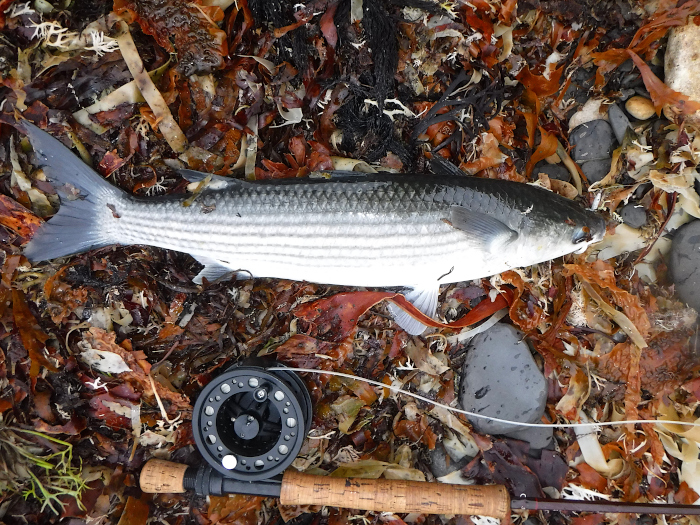
I turned it over so the hook was visible in its tough upper lip
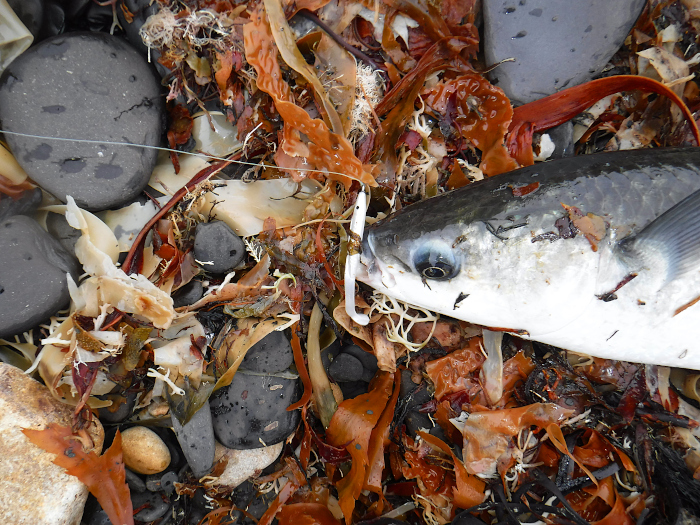
My third and final mullet. What a battler - several minutes to beach it. Note the floating fly line.
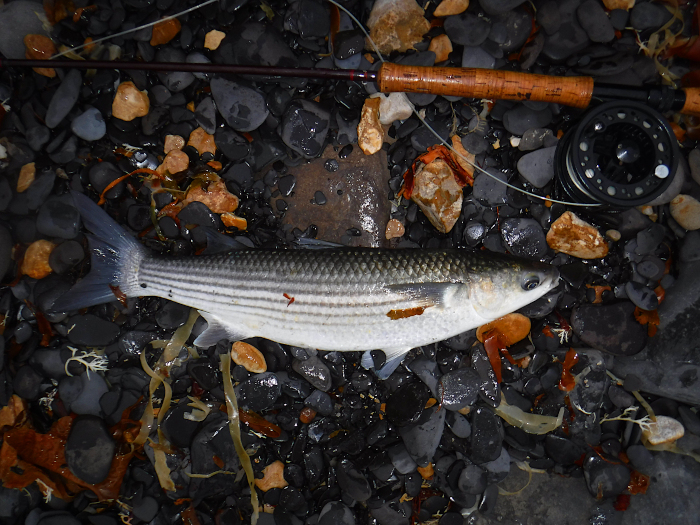
PLEASE TELL YOUR TWITTER (X), FACEBOOK, EMAIL FRIENDS ABOUT THESE BOOKS.
THE SECOND WAVE

Written with Steve Pitts this is a SEQUEL TO THE BESTSELLER "Operation Sea Angler" IT'S AVAILABLE ON PAPER FROM -
HOOKED ON BASS
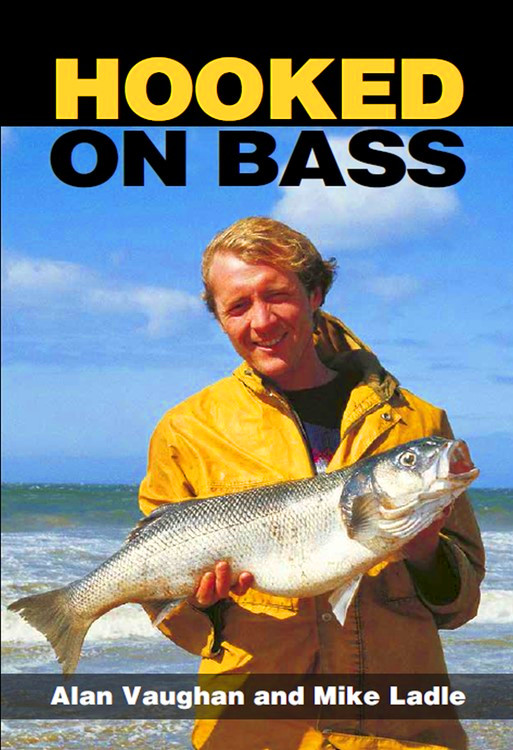
Written with Alan Vaughan. NEW PRINT OF THE ORIGINAL: IN PAPERBACK. Copies available from all good book shops RRP 14:99 -
ANGLING ON THE EDGE
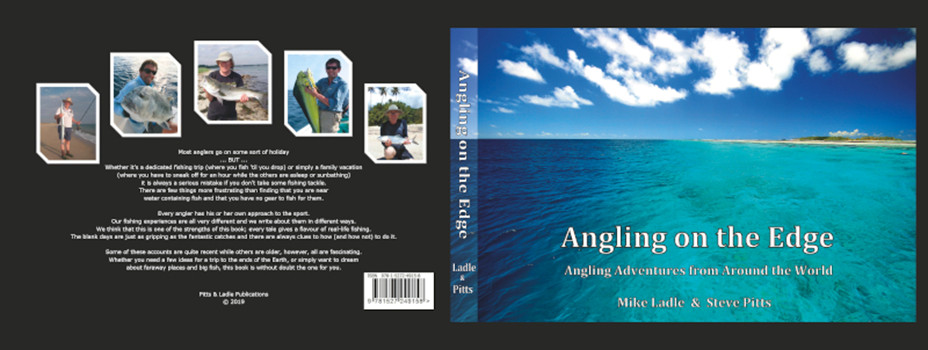
Copies can now be ordered (printed on demand) from Steve Pitts at 34.00, inc. Royal Mail Insured UK Mainland Postage.
To order a book send an E-MAIL to - stevejpitts@gmail.com
FISHING FOR GHOSTS
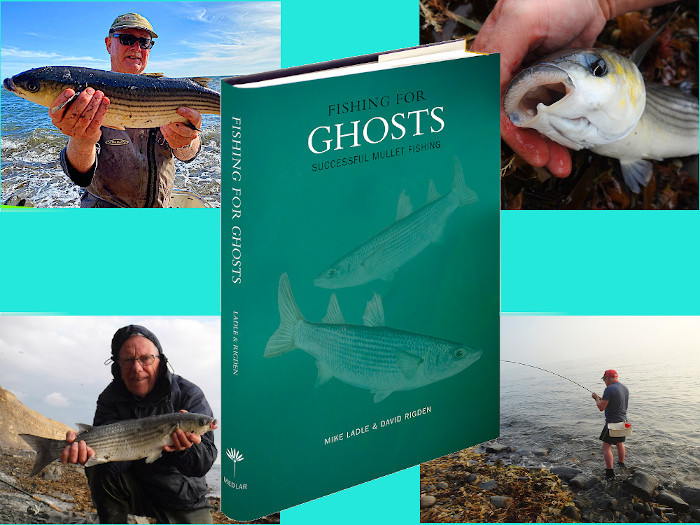
Written with David Rigden. Copies from
If you have any comments or questions about fish, methods, tactics or 'what have you!' get in touch with me by sending an E-MAIL to - docladle@hotmail.com